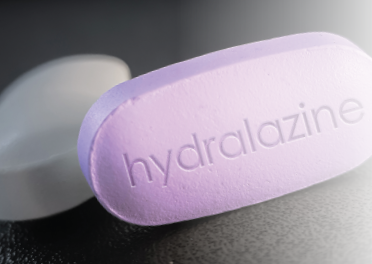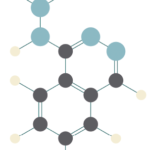
Sonis Photography / shutterstock.com
Hydralazine has been in use as a treatment for hypertension, most notably in heart failure patients, since 1951.1 The drug is a known cause of autoimmune disease, most specifically hydralazine-induced lupus.
Hydralazine-induced lupus occurs in 7–13% of those taking the medication.2-4 It often presents with constitutional symptoms, arthritis/arthralgias, cutaneous lesions, serositis, myalgias and/or hepatomegaly. Features of severe systemic lupus erythematosus, such as cytopenias, nephritis and central nervous system involvement, are not common in hydralazine-induced lupus.
Systemic vasculitis as a consequence of treatment with hydralazine is considerably rarer than hydralazine-induced lupus. Signs and symptoms of drug-induced vasculitis include constitutional symptoms, cutaneous vasculitis and arthritis/arthralgias.5 Severe cases can result in rapidly progressing, multi-organ damage, including necrotizing glomerulonephritis and alveolar hemorrhage. Treatment begins with the prompt withdrawal of hydralazine, and patients may also require corticosteroids and immunosuppressive therapy.
In this case report, we detail an example of hydralazine-induced anti-neutrophil cytoplasmic antibody (ANCA) associated vasculitis precipitating pulmonary-renal syndrome, the most immediately life-threatening potential complication of this condition. Our case is especially notable due to the high titers of MPO- and PR3-ANCA seen in this patient, titers higher than we have seen reported previously in association with hydralazine-induced ANCA-associated vasculitis.
Case Presentation
A 66-year-old Black man presented to the hospital due to low-flow alarms from his left ventricular assist device (LVAD). He’d had an LVAD for three-and-a-half years due to ischemic cardiomyopathy. His medical history also included a chronic line infection, requiring suppressive antibiotics. He had hypertension, hyperlipidemia, diet-controlled diabetes mellitus and stage 4 chronic kidney disease (CKD) with secondary anemia.
Our patient had been treated with 100 mg of hydralazine three times a day for the past four years. He was taking other medications, but none that are known to cause drug-induced lupus or ANCA-associated vasculitis.
The patient reported hemoptysis, which dated back a couple of months and was intermittent in nature. He also reported dyspnea on exertion, which had progressively worsened during the past year. He denied any fever, rash, nasal congestion, myalgia, arthralgia, urinary symptoms, or gastrointestinal bleeding.
Upon arrival, he was found to have a supratherapeutic INR (international normalized ratio) of 3.9. He quit smoking four years ago, but had a 45 pack-year history. The physical exam was unremarkable, apart from bibasilar crackles. Upon arrival, he received intravenous fluids and his LVAD flow numbers improved.
Initial labs were significant for a hemoglobin of 9.0 g/dL and hematocrit of 27.7%. Blood urea nitrogen (BUN) and creatinine were elevated at 73 mg/dL and 5.9 mg/dL, up from baselines of 33 mg/dL and 3.0 mg/dL. Urinalysis showed 3+ blood with >100 RBC per high power field, and 1+ protein. The protein/creatinine ratio was slightly elevated at .44.
Anti-nuclear antibody (ANA) titer was elevated at 1:1280, with a homogenous pattern, and a rheumatologist was consulted to rule out a possible vasculitis or other inflammatory process. ANCA serology showed a significant increase in proteinase 3 (PR3) titer (167 units/mL; normal <20 units/mL) and myeloperoxidase (MPO) titer (100 units/mL; normal < 20 units/mL). Additionally, our patient tested positive for anti-histone antibodies and lupus anticoagulant. Anti-glomerular basement membrane, anti-dsDNA, anti-Smith, anti-SSA, anti-SSB, anti-cardiolipin, anti-beta-2 glycoprotein 1 and anti-ribonuclear protein antibodies were all negative. C3 and C4 levels were within normal ranges, at 78 and 16, respectively.
Hepatitis B surface antigen, hepatitis C antibody, and HIV 1 and 2 antibody tests were also negative. His erythrocyte sedimentation rate (ESR) and C-reactive protein levels were elevated at 90 mm/hr and 40.7 mg/L, respectively.
During his hospital stay, the patient was noted to have progressive renal dysfunction and increased hemoptysis, amounting to about half a cup in volume daily. A CT scan of the chest was performed for hemoptysis workup, which demonstrated bilateral groundglass opacities with a somewhat perihilar distribution (see Figure 1, above). Hemoptysis persisted despite improvements in both left ventricular function and INR. Bronchoscopy and kidney biopsy were not performed because the patient was deemed to be at high risk given his high oxygen requirements and hemodynamic instability. Despite not receiving transbronchial or renal biopsies, he was presumptively started on treatment for ANCA-associated vasculitis.
Hydralazine was promptly discontinued, and the patient was treated with high-dose, intravenous methylprednisolone, followed by 60 mg of oral prednisone daily. He was concurrently treated with plasma exchange and one subsequent dose of intravenous 500 mg/m2 cyclophosphamide infusion.
On repeat testing, his inflammatory markers improved (i.e., his ESR fell to 10 mm/hr, down from 90 mm/hr). His hemoptysis also transiently improved; however, he then developed hemolytic anemia caused by LVAD dysfunction. The LVAD was found to be clotted, requiring it to be turned off.
The patient was ultimately discharged to hospice care.

